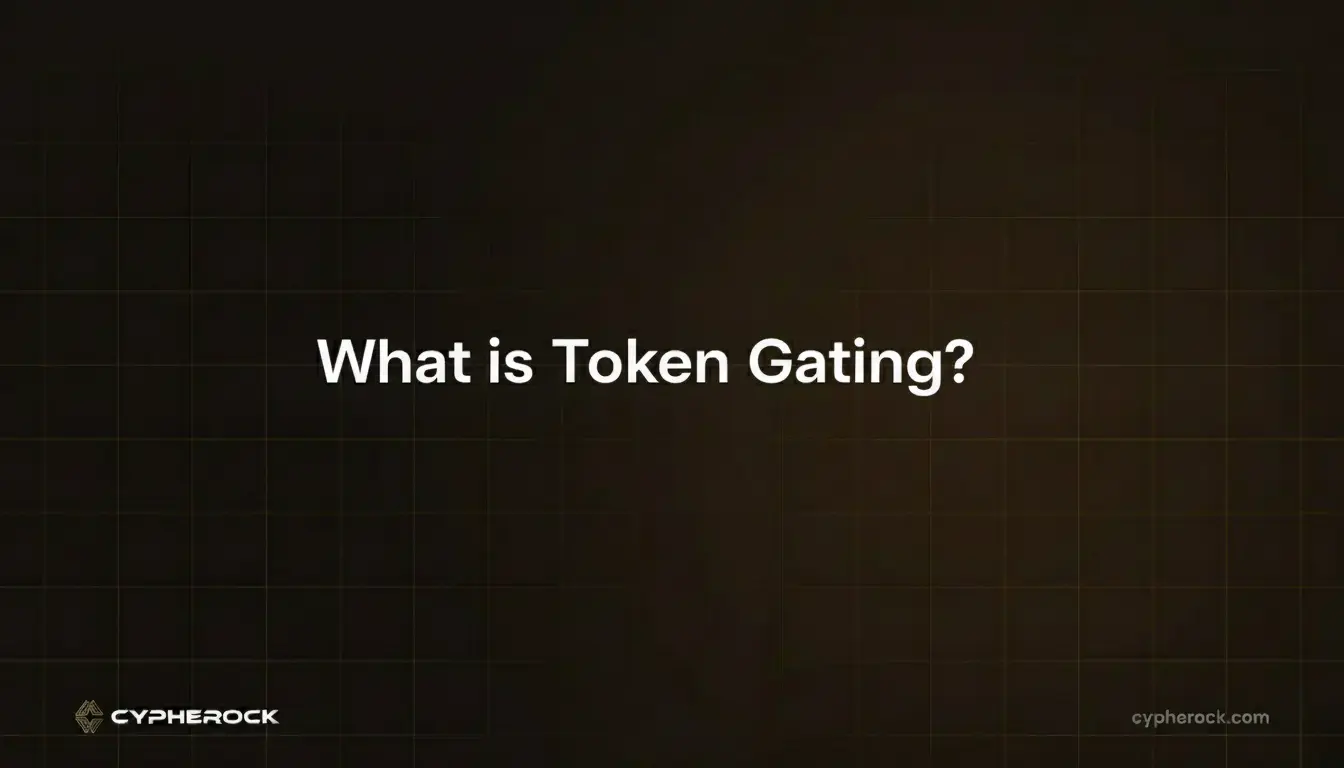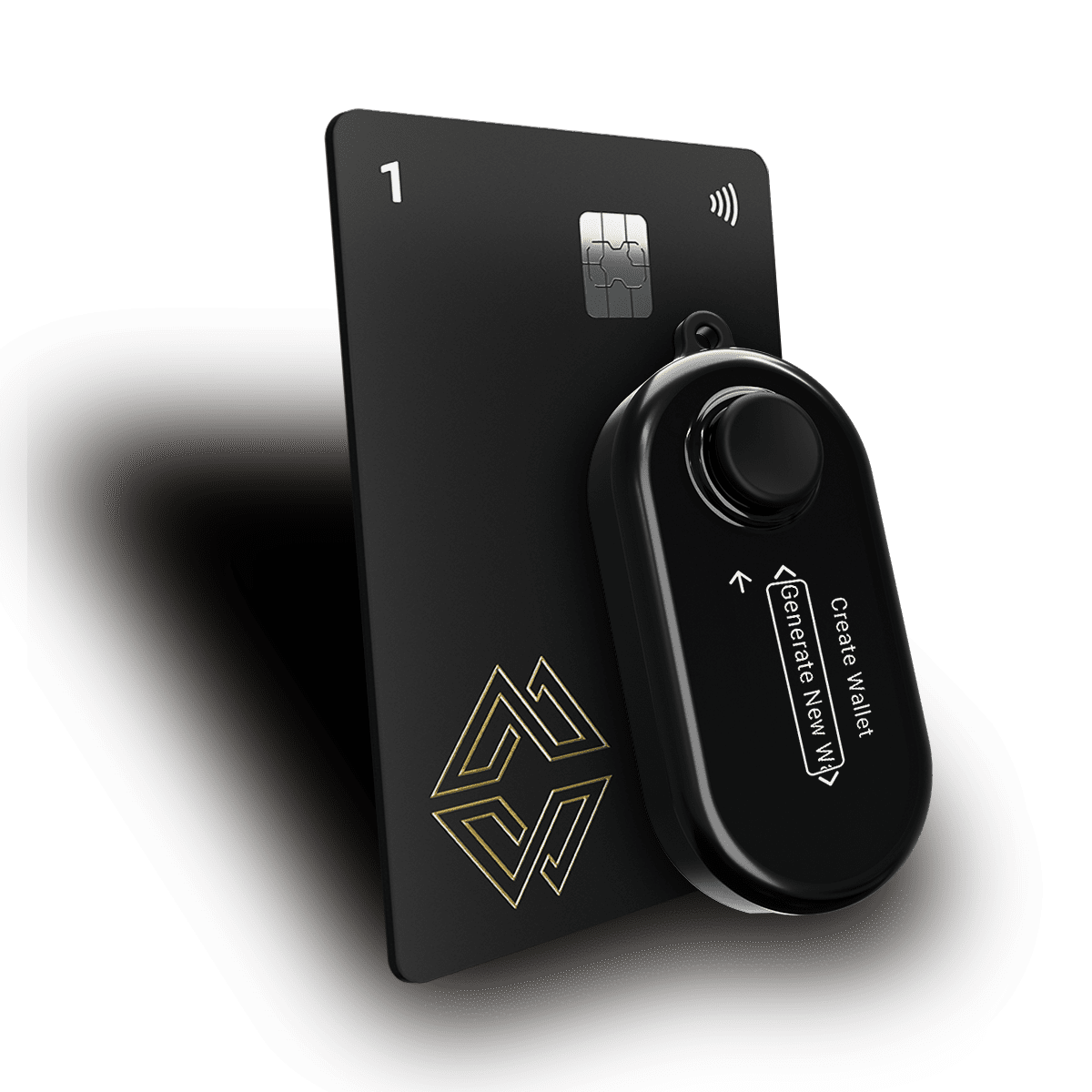

Exclusive clubs used to be physical: velvet ropes, member cards, private lists. Online, exclusivity shifted to paywalls and invite-only communities. Web3 brings a new model: access controlled by verifiable ownership of blockchain tokens. That model is called token gating, a way to open doors when a wallet holds the right token, or keep them closed when it does not. Token-gated experiences let creators and builders tie membership, event entry, premium content, and perks directly to on-chain assets.
This guide explains what token gating is, how it works, the major use cases that gained traction through 2024 and 2025, the practical benefits and real risks, and the tools and platforms you can use to build token-gated communities and services. Security matters for gated access, so the guide also covers token-gated security best practices and suggests how a hardware wallet like Cypherock X1 can protect the keys that control your access rights.
Token gating is an access-control pattern that uses blockchain tokens as verification keys. A project issues tokens, either fungible tokens (ERC-20, SPL) or NFTs (ERC-721, ERC-1155) and systems check whether a given wallet holds one or more of those tokens before granting access. If the wallet qualifies, the system grants roles, passes, or content; if not, the user is denied.
The phrase what is gating usually refers to any mechanism that restricts entry. The gating meaning in Web3 is specific: instead of a password, the proof is on-chain. That proof is verifiable, permissionless, and auditable. Token ownership data lives on a ledger; smart contracts and off-chain services can query that ledger to confirm eligibility.
Key distinctions between token-gated access and traditional gating:
Because token gating maps access rights to assets that can be traded, transferred, or staked, projects must design rules carefully. The ownership-based model unlocks novel membership models, new monetization paths, and stronger alignment between creators and holders.
Token gating works through a short process chain that blends on-chain checks with off-chain access logic. Here’s a step-by-step walkthrough that clarifies the mechanics.
A typical example: a token-gated community. When you connect your wallet, a bot checks the chain for a qualifying NFT. If the check passes, the bot assigns a platform role that unlocks private channels. If ownership changes, the bot can remove the role.
Token gating supports multiple verification models:
Token gating is flexible enough to power both low-friction consumer experiences and high-security enterprise workflows. The difference lies in design choices for verification, off-chain orchestration, and key custody.
Token gating unlocked a wave of creative applications across community building, learning, events, rewards, and premium content. Below are the most influential use cases that define the token-gated trend in 2025.
Discord became the default social layer for many Web3 projects. Token gating built verified member lists at scale: bots like Collab.Land and third-party platforms handled on-chain checks and role assignment. For creators, token gating prevents spam, ensures conversations stay focused, and creates a holder-first environment. For members, the token-gated model signals scarcity and shared incentives, you are with other people who committed on-chain.
Design tips for token-gated Discords:
Token gating in chat platforms replaced manual whitelists and invited creators to manage communities programmatically.
Token gating extended beyond chat to immersive, interactive experiences. NFT holders might unlock a metaverse estate, private quests, or a limited-seat masterclass. In virtual environments, a token functions like a VIP pass: tap your wallet, enter a private lounge, or access an exclusive lecture.
Educational platforms offered token-gated courses where completion certificates or special assets served as prerequisites for advanced modules. Token gating helped creators monetize learning while rewarding engaged students with token-gated perks tied to progress or milestones.
Organizers experimented with NFTs as digital tickets that grant real-world access. Token gating for live events solved fraud and scalping problems by verifying ownership on-chain, and token-gated passes could be bundled with collector value or future utility.
Practical examples:
Because tokens can be transferred, event producers used cooling-off periods, custody rules, or staking locks to reduce scalping while keeping secondary market activity possible.
Token gating powers loyalty programs that are owned by members. Instead of traditional points, holders receive on-chain rewards: airdrops, discounts, partner perks, or ongoing revenue shares. Brands used token-gated loyalty to convert buyers into advocates. Rewards could be contingent on retention (e.g., holding a token for a period) or on participation in community activities verified on-chain.
Token-gated rewards encourage holders to remain active, participate in governance, and spread the project through their networks.
Token gating brings several distinct advantages for builders and communities. These benefits explain why creators adopted the pattern rapidly.
1. Scarcity that scales. Token gating ties access to scarce assets. Scarcity creates perceived value and supports price discovery when communities trade tokens.
2. Real ownership = real loyalty. When someone holds a token, they have economic skin in the game. That alignment tends to increase long-term commitment and higher-quality interactions in token-gated communities.
3. New monetization models. Projects can sell membership-like tokens, earn royalties on secondary sales, and design tiered access packages that reward early supporters.
4. Automated verification. Smart contracts and indexers handle eligibility checks. Manual moderation overhead drops for token-gated channels.
5. Programmable membership. Holders can gain conditional privileges based on token traits, staking state, or tenure. Token gating lets creators reward long-term holders with escalating perks.
6. Cross-platform portability. Because tokens are on-chain, holdings work across platforms that respect the same standards. An NFT used for Discord access can also unlock a metaverse space or a partner product.
These benefits make token gating attractive for communities that prioritize authenticity, scarcity, and long-term engagement. At the same time, token gating enables creative incentives that amplify network effects across social platforms and event spaces.
Token gating introduces meaningful trade-offs. Designers and holders must be aware of the main token gating risks and how to mitigate them.
Adoption risk. If a token is too exclusive, turnout may be low. Projects must balance scarcity with usability to keep gated experiences lively.
Market dependency. Access tied to tokens links community health to token markets. Price volatility can shrink member bases when holders sell. Consider hybrid gating that uses activity or membership windows, not only price.
Technical integration. Implementing reliable checks requires smart-contract knowledge, indexers, and secure off-chain infrastructure. Mistakes can lock out legitimate holders or create security gaps.
Phishing and social engineering. Bad actors clone verification pages and trick users into signing transactions that grant approvals or transfer tokens. Users must never sign transactions for access verification; read-only signature methods or message signing that doesn’t approve allowances is safer.
Custody threats. If a holder’s wallet is compromised, the attacker inherits both token ownership and the access privileges that come with it. This is a core token-gated security concern. Use strong custody: hardware wallets, multi-key solutions, or separation of assets (hot wallets for daily use, cold storage for access-critical tokens).
Regulatory uncertainty. In some jurisdictions, tokens linked to access or economic rights can attract scrutiny. Projects should document their intent and legal structure when offering token-gated benefits that resemble securities.
Mitigations and best practices
Addressing these challenges upfront reduces friction and protects both creators and holders in token-gated systems.
If you are building or joining a token-gated experience, you have three main pathways. Each has different effort and control trade-offs.
For teams with developer capacity, building a custom token gating stack gives full control. Components include:
Custom builds are ideal when the gating rules are novel: trait-based checks, staking requirements, or multi-token proofs. Make sure to audit code and use well-tested indexers.
For quick adoption, use established token gating tools:
These tools reduce time to market, but they may have platform limitations. They also place some trust in the tool provider’s uptime and security.
Platforms like Tokenproof, Unlock Protocol, and others provide turnkey token gating platforms that cover event ticketing, membership passes, and subscription-style gating. These platforms often offer:
Choose a platform that supports your desired token standards and has a clear approach to privacy and data security.
With a clear rule set and the right tools, launching a token-gated community or event can be straightforward and highly effective.
Token gating rewrites how scarcity and access work online. By assigning membership rights to on-chain assets, projects can offer genuine ownership, layered perks, and programmatic membership. That model scaled through Discord, metaverse experiences, hybrid ticketing, and loyalty systems in 2024 and 2025.
Design responsibly: balance scarcity with vibrancy, protect holders with strong custody practices, and avoid verification flows that require risky wallet approvals. The safety of token-gated access depends on how holders manage private keys. For greater protection of access-critical tokens, consider cold custody: Cypherock X1 offers a durable, seedless split-key architecture that reduces a single point of failure for token ownership and access credentials. Linking token gating with sound custody preserves community value and keeps exclusive experiences secure for holders.
If you plan to build token-gated experiences, start with a simple verification model, educate members about secure signing practices, and adopt hardware wallet recommendations for valuable passes. Token gating can increase loyalty, generate revenue, and unlock new experiences when paired with strong security.
Protect your keys. Protect your access. Consider Cypherock X1 for secure custody when token gating matters. Internal resources to explore: Cypherock blogs on secure custody, Shamir secret sharing, and hardware-wallet best practices for example: Why you need a hardware wallet and How Cypherock X1 enhances security for long-term holders.

Q1: What is token gating?
Token gating is the practice of granting or denying access based on whether a wallet holds a specific blockchain token. It ties rights and privileges to verifiable on-chain ownership.
Q2: What does token-gated mean?
Token-gated means protected by a token check. Token-gated systems verify token ownership before unlocking content, community roles, or event passes.
Q3: What is the gating meaning in Web3?
Gating meaning in Web3 is access control by token verification rather than by usernames or centralized credentials.
Q4: What are the token gating benefits?
Benefits include ownership-aligned communities, scarcity-driven value, new monetization opportunities, and automated verification of membership.
Q5: What are token gating risks?
Risks include phishing, wallet compromise that transfers both tokens and access, market-driven membership volatility, and technical integration errors.
Q6: How does token-gated security work?
Token-gated security depends on both the verification flow and the wallet custody model. Use read-only signature checks, avoid approval transactions for simple verification, and keep high-value tokens in cold storage solutions such as Cypherock X1.
Q7: What token gating platforms and tools should I consider?
Begin with Collab.Land and Guild.xyz for community gating, Tokenproof or Unlock Protocol for event and commerce gating, and integrate SDKs from thirdweb or similar for custom flows
